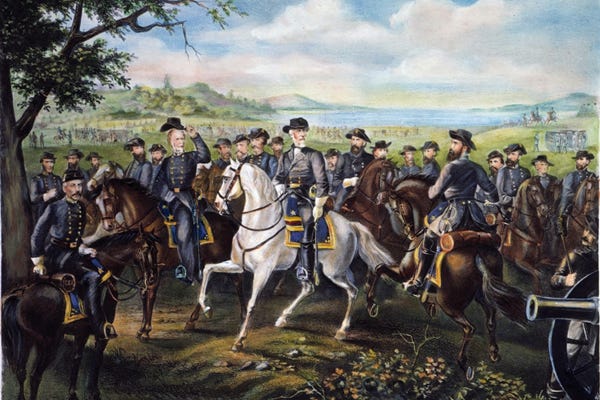Southern Heritage & The Terrible Swift Sword
The High Brass of the Confederacy
The High Brass of the Confederacy
“Every man should endeavor to understand the meaning of subjugation before it is too late… It means the history of this heroic struggle will be written by the enemy; that our youth will be trained by Northern schoolteachers; will learn from Northern school books their version of the war; will be impressed by the influences of history and education to regard our gallant dead as traitors, and our maimed veterans as fit objects for derision… It is said slavery is all we are fighting for, and if we give it up we give up all. Even if this were true, which we deny, slavery is not all our enemies are fighting for. It is merely the pretense to establish sectional superiority and a more centralized form of government, and to deprive us of our rights and liberties.”
~Maj. General Patrick R. Cleburne, CSA, January 1864
The Confederacy was far more impressive in the realm of military activities than in politics and government. This was due in large measure to the high quality of its military leadership. The persistence of frontier conditions. The menace of hostile Indians, the threat of slave insurrection and attachment to the ideal of chivalry all tended to promote a martial spirit in the South and to lend prestige to the profession of arms. The military academy was a favored institution in antebellum times, and many talented young Southerners obtained appointments to West Point. Among the top ranks of the Confederate army, all full generals and lieutenant generals were alumni of the United States Military Academy, with the exceptions of Nathan Bedford Forrest, Wade Hampton, and Richard Taylor. Out of the 72 major generals and 328 brigadier generals, 124 had graduated from West Point, and an additional ten had attended the academy for at least one year.
Both before, during, and after the war, Southerners placed significant value on military rank. The Confederacy had…


